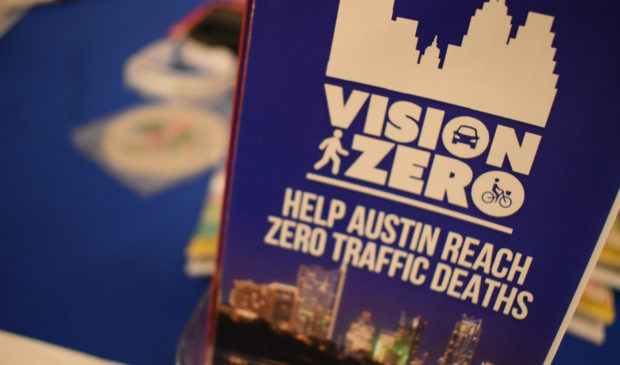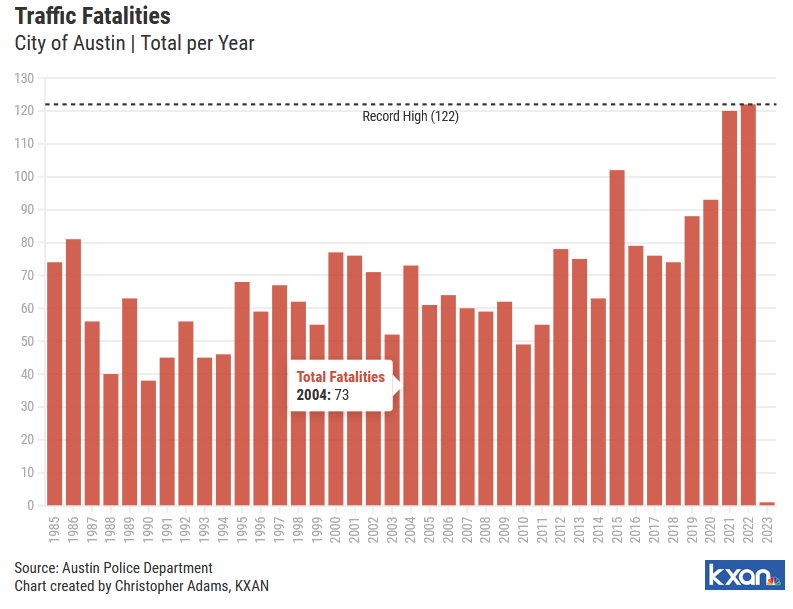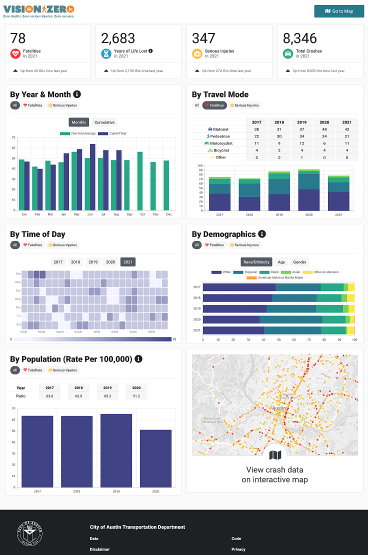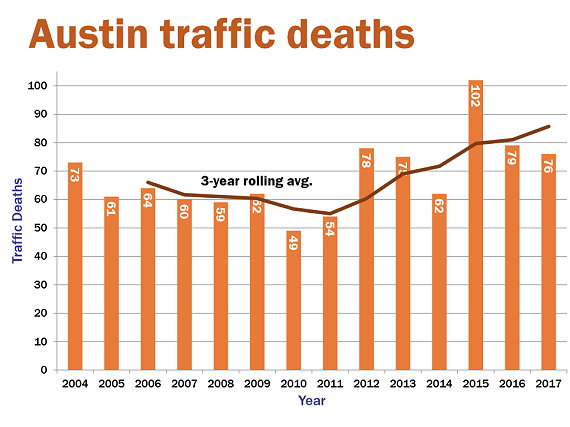 AUSTIN (KXAN) — Since 2015, the City of Austin’s Vision Zero program has worked to enhance transportation safety citywide and eliminate traffic fatalities. This week, Vision Zero’s latest two-year update reported substantial improvements in roadways that have undergone safety improvements — but work continues to retrofit the city’s roadway network and crack down on dangerous driving habits.
AUSTIN (KXAN) — Since 2015, the City of Austin’s Vision Zero program has worked to enhance transportation safety citywide and eliminate traffic fatalities. This week, Vision Zero’s latest two-year update reported substantial improvements in roadways that have undergone safety improvements — but work continues to retrofit the city’s roadway network and crack down on dangerous driving habits.
Austin’s Vision Zero program has been tracking a higher volume of serious and fatal crashes since the onset of the coronavirus pandemic, a trend seen in cities across the country. Data recorded in 2021 and 2022 showed substantial increases in fatal crashes on state-owned roadways that bisect Austin, with 71 fatalities in 2021 and 83 in 2022, respectively.
By comparison, pre-COVID numbers from 2018 and 2019 reported fatalities on state-owned roadways at 48 and 53 deaths.
Joel Meyer serves as a transportation planner with the Vision Zero program. He said a substantial factor behind these heightened fatality numbers is the risky behaviors some drivers developed during the pandemic when traffic volumes were lower.
But now that traffic volumes are at or near pre-pandemic levels, those risky behaviors — think speed and distracted or impaired driving — are amplified with more people back on state-owned and local roadways.
“That paired with staffing shortages amongst our law enforcement agencies is really leading to a situation where we’re just seeing a lot of dangerous, high-risk behaviors out on our roadways,” he said.
Right now, the City of Austin has zeroed in its focus on retrofitting city roadways to prioritize safety, lower speeds and enhanced pedestrian and bicycle access. It comes at a turning point in transportation engineering happening nationally, as previous efforts to amplify faster and higher volumes of vehicle movement came at a cost, Meyer said.
“For the last 100 years or so, the main thinking and transportation planning and design was to try to accommodate fast vehicle movement — that was kind of the number one priority,” he said. “Over the last few decades, there’s been, really, a cultural shift — not just in Austin, but around the country — that people really want safer streets. They want other options.”
Austin is home to 280 square miles of land, meaning the act of retrofitting is one that won’t happen overnight. However, Meyer said the program is seeing progress in intersections that have already been treated with safety upgrades.
In the past two years, the program has finished work on seven major intersection safety projects and was in the midst of work on 25 other intersections. Forty locations have been treated with low-cost, high-impact system improvements, with speed limits lowered on almost 50 arterial roads and hundreds of residential streets.
And among the city’s High-Injury Network — or roadways that account for the highest concentration of serious and fatal crashes — South Pleasant Valley Road has reported an 82% reduction in injuries and fatal crashes of all modes since its multimodal safety project.
“We’re excited about the results we’re seeing,” he said. “We know they’re improving people’s lives, they’re saving lives and preventing serious injuries. And we’re going to continue to double down on those kinds of strategies.”




